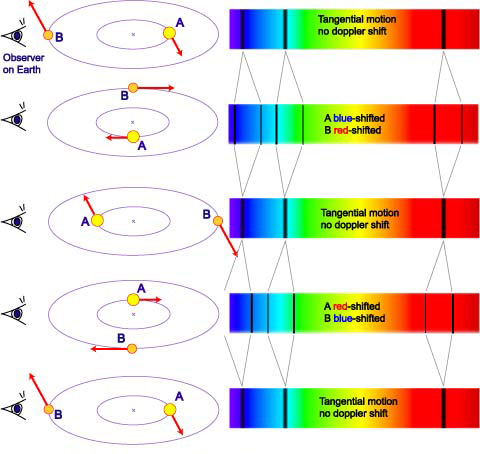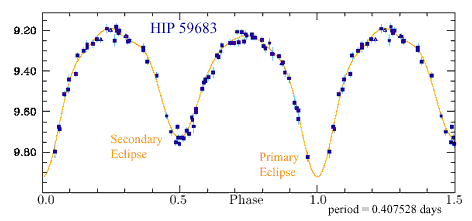Spectroscopic Binary Stars
A surprisingly large fraction of the stars are in binary or multiple star systems. Sometimes the binary stars are obviously separated, like 61-Cygni in the close neighborhood of the Sun. They are called "visual binaries". Others can be detected from periodic variations in luminosity associated with the eclipsing of one star by the other. Still other can be detected from the overlapping of different kinds of spectra. Modern interferometric measurements have added to our ability to distinguish and study binary stars.
 This image adapted from the Australia Telescope National Facility, see Ref. | Binary stars can be detected from the red shift of the spectrum of one star while the other is blue-shifted. |
Binary orbits can contribute to the measurement of the masses of different kinds of stars that appear in such systems.
Star Concepts
Star Classification
Reference
Australia National Telescope
| HyperPhysics***** Astrophysics | R Nave |
